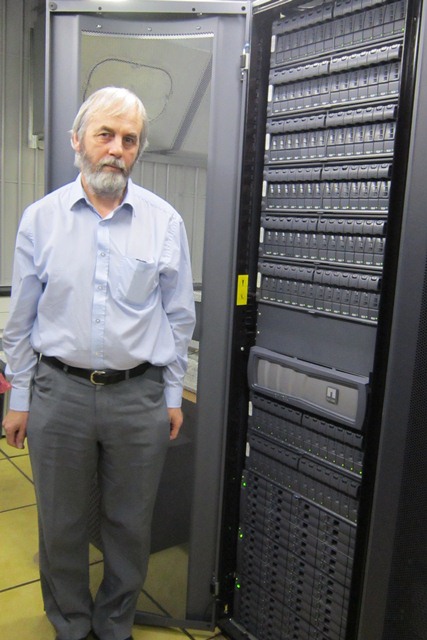Twenty years ago next month, the University purchased its first central fileserver. Neal Curran from IT Services had attended Auspex’s UK Launch Event in London in early 1992 and had been very impressed with the capabilities of their network attached storage (NAS) fileserver. He then managed to persuade our then Director of IT Services, Annette Haworth, that this was the way of the future for central storage and we subsequently ordered an Auspex NS5000 with ten 1GB disks.

While Auspex had already been selling in North America for a few years, our NS5000 was the first true NAS device to be installed anywhere in the UK, and the third in Europe, with a couple of US corporations having previously installed one each in their European offices.
The NS5000 had many of the features of modern fileservers in terms of performance, capacity, resilience, convenience of upgrade and ease of administration. It provided a large increase in filespace compared with what we had then on our existing Amdahl mainframe. It also paved the way for centrally file-serving the Sun workstations/servers which would replace the Amdahl, and later our centrally managed PCs. Over the next twelve years we upgraded through three more Auspex fileservers until Auspex went into liquidation in 2003.
In the 1990s some engineers had left Auspex to form a new company called Network Appliance which then developed, and improved on, the Auspex offerings. After a tendering process in 2004 IT Services switched to using Network Appliance (NetApp) fileservers. Today we have on the Whiteknights Campus, a clustered set of four NetApp FAS3240 fileservers with 250TB of mirrored disk and we also have a fifth standalone NetApp FAS3140 on the Greenlands Campus.

These provide commercial-strength, high performance, large capacity, highly resilient and available, secure, flexible storage and this approach to providing central storage continues to be one of the successful corner-stones of our IT strategy.
